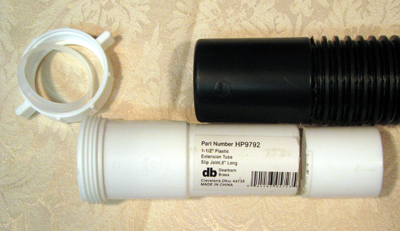
That's a Slip Joint extension, found in the plumbing section,
chosem because it's a friction fit to the inside of the hose.
It's shortened to match the depth of the end of the hose.
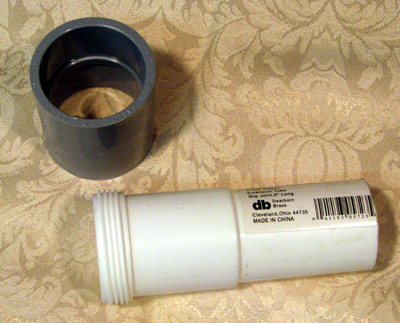
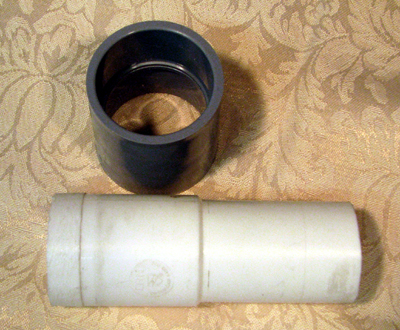
The threads are ground off until the end of the slip joint just
fits inside the end of a standard 1 1/2 inch pipe coupling.
Then it's glued in place.
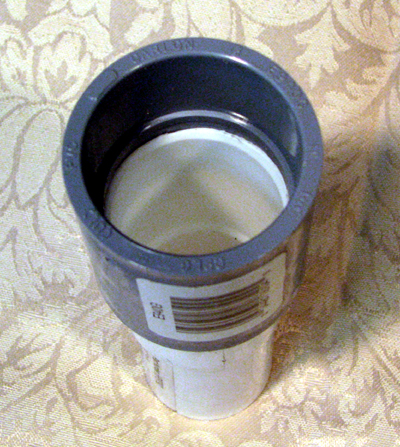
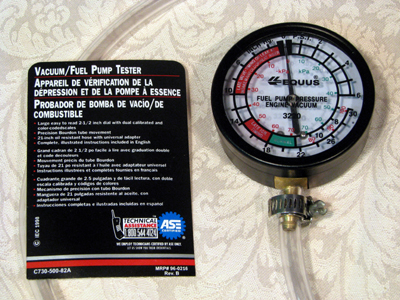
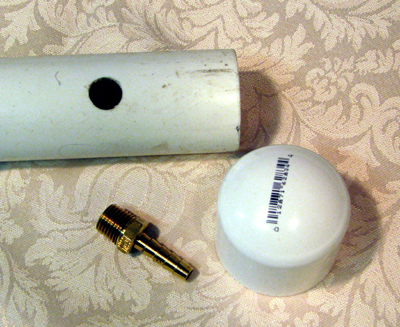
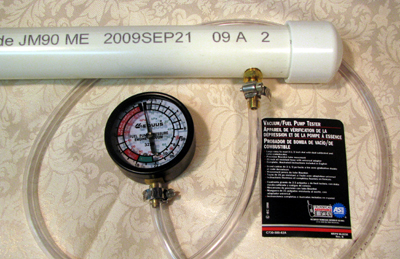
a piece of 1 1/2 inch pvc pipe. The coupling cuts it's own
threads. A piece of clear poly tubing and some pipe clamps
links the gage to the pipe. A pvc cap terminates the pipe
for testing.